|
(9 min read)
Marketing, Sales and Web Development... together in harmony? Data based decisions being made, with information being fed back via closed loop reporting to keep departments aligned, informed, agile and working collaboratively towards common goals? Yes it is possible. And it's already happening. Growth driven design (or GDD) is relatively new as an 'official' methodology and continues to gain traction amongst web developers, sales professionals and marketers alike: perhaps because GDD just seems to make sense. This article explores some of the core concepts around GDD and it's alignment with growth marketing. We'll go on to suggest how marketers can apply a growth mindset to tie together and drive effective customer centred digital strategies in an increasingly data-driven environment. What is Growth Driven Design? (the 2 minute version)
Growth driven design (or 'GDD') was born from the idea that the process of traditional website design is broken.
You may have experienced this 'broken process' first hand in your organisation if you've ever had to build or rebuild your company website. When you think 'website', do any of these issues and risks sound familiar?
Growth driven design not only sets out to solve these common issues, but it's also tightly integrated with marketing and sales. What analysts learn about website visitors and behaviour helps to inform and improve marketing and sales strategies and tactics (and vice versa).
In addition, there is a phase of 'continuous improvement' built into the process. Continuous Improvement follows a 'launch pad' site which is aimed at being the minimum viable product to go live with. This launch pad site is still a complete site, but is made live with the understanding that it isn't perfect (websites in general, by the way, are never perfect). With traditional web design, going live is usually considered the end point - break out the champagne and move on. However, with GDD - the launch pad website forms a starting point to work from and begin collecting the valuable user data which will guide future decisions around features, pages, design and content. ** There are plenty of resources online that cover growth driven design in more detail. For a deep dive, check out Hubspot's own excellent GDD certification course and growthdrivendesign.com What is Growth Marketing?
Another logical extension of these concepts comes in the form of Growth Marketing (and just quickly - we do mean growth marketing here, not growth hacking).
A Growth Marketer, in a basic sense, could be any data driven marketer whose goal is attracting more engaged customers, leading to growth. Typical efforts may be towards running experiments such as A/B testing, digging into user data to derive meaningful insights and focusing around conversion rate optimisation. As this article on Drift puts it - the key difference between growth marketing and traditional marketing is: "traditional marketing focuses on the top of the funnel, the growth marketing job description requires focusing on the entire funnel." Fundamentals of a Growth Driven Mindset
As we then look at both Growth Driven Design and Growth Marketing, we start to notice some convergence in the core values of both mindsets:
Notice anything similar?
Since we're starting with a (somewhat) unified mindset, let's next take a look at tying together three of the core principles and putting things into practice... 1. Everything Starts with the User / Customer
It's no secret businesses are realising the importance of putting the customer at the centre of marketing, sales and service efforts.
According to Adobe's recent 2017 Digital Trends report, 71% of respondents considered 'optimising the customer experience' to be 'very important' for their digital marketing over the next few years. Both growth driven design and growth marketing share a similar user-first philosophy:
Hubspot goes a step deeper on this last point to suggest this comes even before business needs. This makes a lot of sense when you realise that there is often a gap between what a business wants and what the business' customers want. When you focus on solving for the user first, solutions immediately become more meaningful and less time is wasted on building 'solutions' that nobody actually wanted in the first place! 2. Focus on The Whole Funnel
Customer experience should not be the responsibility of one individual or department; it is the responsibility of the entire organisation. Therefore, it makes sense to consider the entire funnel (not just sales, marketing or customer support) when focusing on growth driven initiatives with the customer at the core.
... many different parts of the organization are responsible for delivering the ultimate customer experience. Providing a seamless customer experience thus begins with the customer’s perspective at the center of the organizational structure and requires all parts of the organization to work together in lockstep.
Once you have adopted a user/customer first approach and identified your highest value customers, it's important to:
For business operations - the aim should be to unify the organisation around these goals.
Only a basic understanding of the modern purchase funnel is needed to realise how important this full funnel mindset and approach can be and how critical it is to long term business success: 3. Continuous Learning & Improvement
Be willing to measure everything; be willing to admit failure; always be learning; get stuff done. These core principles all ring out in support of an agile, experiment-driven approach to marketing.
In new businesses this is particularly important, because:
Though even in well-established businesses where the consumer environment is changing at a rate faster than ever before, the principles are valid. Besides, with so much access to data and software and tools such as A/B testing so readily available, why wouldn't you test, measure, learn and grow? Lastly - close the loop and make sure the data from customer service is flowing back to sales, vice versa and all the way through the funnel. Say no to silos. Putting It Into Action
Now you've got your 'grown driven hat' on and you're ready to tackle the whole funnel.
Where do you start? How do you prioritise? Conveniently, Growth Driven Design suggests an 8 Step Framework for prioritising the changes and attention/focus areas for websites (or 'website hierarchy'). The two interconnected pieces of this process then are the 'GDD Website Hierarchy' and the 'Continuous Improvement Cycle' (Plan > Build > Learn > Transfer). In order of priority/hierarchy:
We're assuming in the example above that a company website forms the central point and conversion funnel of the overall sales and marketing efforts. Credit for the 8 points above to Hubspot.
For more help on implementing the steps above, or for in house training sessions on growth driven concepts, you can speak to one of our experienced digital consultants.
In Conclusion
Concepts like growth driven design and growth marketing reinforce a convergence towards a customer first, data driven mindset. Whilst some organisations find this shift easy, others are still struggling to adopt this approach and move towards customer experience excellence.
Even in 2017 a number of challenges still exist around this, such as navigating data, cultural challenges, strategy and creating momentum within the organisation, as well as digital marketing skills gaps. McKinsey&Company suggest a three tiered approach to tackle these challenges at an organisational level. For marketers, the movement starts with the right mindset, then considering the key actions:
We hope this article has provided some ideas to light that 'fearlessly creative' spark. A footnote:
An article first published in 2012 from the IPA (with Thinkbox) demonstrates the importance of and improved effectiveness of pairing short term, data driven campaigns with long term creative ones. The report examines the business effects of 1,000 advertising campaigns from over 30 years of IPA Effectiveness data. Of particular note - it warns about the danger of using very short-term metrics as primary performance measures for long-term success, since short term and long term effects work differently. We felt it important to reference the article here: https://www.thinkbox.tv/Research/Thinkbox-research/The-Long-and-Short-of-it
0 Comments
** Last updated 29 May 2017 - Now '13 of the Best' **
(5 min read) Since 'best' is a subjective term, let's first quickly clarify that the list below is a selection of digital campaigns that we personally found to be innovative and interesting over the past 12 months or so. Most importantly, we've focused on campaigns and products demonstrating a creative, marketing application of modern digital technology in a unique and/or specific way. Were all of these campaign examples successful? We're not entirely sure. Are there others that deserve a spot on this list? Most definitely. We'll try to keep the list up to date as we move through the remainder of 2017. Let's dive in, in no particular order. 13. Air New Zealand AR to Read Customer Emotions
May 2017
Augmented reality (AR) could one day be used by flight attendants to immediately get information about your favourite drink, destination, loyalty status, meal preferences and even figure out how you are feeling. A collaboration between Air New Zealand and Dimension Data, the project is currently in beta but there's room for further AR experiments. Read the full story here. 12. Coca-Cola Targeted Ads Based on People’s Facebook & Instagram Photos
May 2017
Coca-Cola wanted to nudge users to consider its 'Gold Peak' brand of iced tea. To do so, they trawled through people's photos on Facebook, Instagram and Twitter and served them hyper-targeted ads based on images they shared on those social media platforms. To make this a reality, they tapped into an image recognition engine to identify people who posted images that:
Talk about specific targeting! Read more here. 11. Blippar: Augmented Reality in Banner Ads
8 May 2017
What's the next logical step from Pokemon Go? How about augmented reality in digital ad placements. Enter Blippar. From their Youtube page: "Introducing the world’s first augmented reality digital ad unit - augmented reality digital placement (ARDP). The new technology enables rich media units to leverage a user’s smartphone or desktop camera to bring brand experiences to life in AR without the need for a separate app or a special device." Watch the full video here. 10. New Zealand Fire Service 'Escape My House'
22 Mar 2017
'Escape My House' is an interactive experience that takes place inside a real house fire, demonstrating in a very tangible and immersive way the need for households to be prepared for a fire and why they need an escape plan. FCB New Zealand has used a combination of interactive 360 video (with a virtual reality (VR) option) in a technology first in partnership with the New Zealand Fire Service. The experience is of an actual house fire, which the user is challenged to escape. What looks like a manageable fire is, in fact, already out of control and you have only seconds to get out safely. 9. King Kong Movie Google Maps 'Skull Island'
Feb-Mar 2017 (approx.)
A fictional location as part of the upcoming King Kong movie release, for a limited period of time 'Skull Island' was added to Google Maps by Google in partnership with Legendary and Universal Pictures. It appears as an 'archaeological site' off the west of the coast of Peru and near the equator. Users can post their own photos and 'fantasy reviews' of Skull Island. 8. Audi Q2 #Untaggable Hashtag Generator
Mar 2017 (approx.)
Audi's statement for the campaign is: 'We have a hashtag for everything. What should be the hashtag for Audi Q2? That's #untaggable'. Users are encouraged to create a hashtag for the new Q2 crossover SUV. The campaign is tied in with an interesting 'hashtag generator' on Audi's site, which on the mobile version let's you shake your phone to generate random hashtags. Watch the full Audi video ad here. 7. Ikea Renamed Products After Frequently Googled Problems That Those Products Solve
Dec 2016 (approx.)
In a clever play on user intent and how this is used by search engines like Google as part of it's algorithm to display search results, Ikea not only came up with an interesting campaign, but also one with a very solid grounding in SEO principles. Apparently 'unrequited love' can be solved for just $14.99. 6. 'Alice Through the Looking Glass' Wonder Mirror
Early 2016
In a high budget use of complex facial recognition and 'real time augmented facial transformation', Part IV delivered a creative, interactive experience for Disney that 'hadn't really been accomplished before'. Users could transform their faces in real time to look like characters from the movie. Instagram-sized videos and a photo were then emailed to users as soon as they completed the experience. Check out the full case study here. 5. The Banner Ad that 'Can See What You See'
Early-Mid 2016
In this example, one of Europe's largest energy companies Vattenfall combined real time user data from Sweden's largest real estate website with sophisticated real-time image recognition to show custom, dynamic creative and call to actions to around 2 million users per week, personalised based on the image that they are viewing at the time. The end result: a dynamic banner ad that can adapt it's messaging to millions of images, all in real time. Read the full case study here. 4. UNICEF's Hidden Banner With a Strong Message
Early 2016
According to the case study, 25% of online users in Sweden use ad blockers to prevent banner images (ads) from showing on websites. In this example, UNICEF had an important message for the campaign to deliver and they needed as many people as possible to sign an online petition for children's rights. The solution: to turn this technology around and target a message specifically to these 25% of users. A 'disguised banner' was created that would get past the ad blocker software and delivered a simple message that earned it’s space: “Children’s rights should never be blocked. Sign up for children’s rights to complain.” Read the full case study here 3. Virgin's Push for VR
Early 2016
It's great to see many creative examples of VR emerging and being used in digital marketing campaigns. It's a bit sad then, that at the same time, many sources are reporting a slower-than-expected adoption of the new technology in 2017 - a year that was touted by many as 'the year of VR'. The biggest hurdle seems to be a stalemate between content producers that are waiting for more advertisers to come on board and advertisers who seem hesitant due to a lack of content producers. Hopefully we see this hurdle overcome soon. Virgin has been one of the first to embrace VR with considerable gusto. Virgin created a unique solution where customers in stores could be entertained while they waited with a virtual tour of Virgin Holidays’ destinations, allowing them to ‘try before they buy’. The content was filmed from a first person perspective, 'so everything captured, at every angle, was the sensation and visuals a customer could experience themselves.'
*The last two mentions are more 'products' than 'campaigns'. However, they certainly satisfy the criteria of being innovative and were just too awesome/weird not to include in this list.
2. Pizza Hut 'Pie Tops' - Order Pizza From Your Shoe
March 2017
Yes, really. Whilst they may not be the future of shoes, the interestingly named 'Pie Tops' are part of a Pizza Hut ad campaign starring retired basketball player Grant Hill. The shoes feature built-in bluetooth that syncs to a mobile app. 'When a user squeezes the right tongue once or twice (this can be adjusted in the settings to avoid accidental activation), it places an order for whatever style of pizza the wearer has saved in the app.' Read the full article here. 1. Google and Levi's 'Project Jacquard'
Early-Mid 2017
It might look (or sound) like a gimmick at first, but Google and Levi's seem quite serious about their next swing at the wearables market. Slated to release in the US in Spring for around $350, the technology is much more than just adding wi-fi connectivity to a jacket. According to the official site, the technology actually 'makes it possible to weave touch and gesture interactivity into any textile using standard, industrial looms.' This means that 'Everyday objects such as clothes and furniture can potentially be transformed into interactive surfaces.' Excited yet? The jacket is even planned to come with it's own API for app developers. Get the full story here
Check back for updates to this article. Feel free to share other examples in the comments section.
(7 min read)
There are differing schools of thought on whether the idea of a 'full service digital marketing agency' is actually a good idea in reality. Many feel that a full service agency simply doesn't work in practice - the digital marketing skill set is far too varied and becoming more so all the time. So why do some agencies claim to be 'full service providers'? Is the concept itself flawed as they set out to 'specialise in everything'? Is it all just a myth? This article sets out to answer these questions along with helping you to decide which type of agency to partner with and why. The Amazing Agency That Does Everything, Really?
What is really meant by 'full service' when we talk digital marketing?
'Digital' in itself is a massively broad area (what isn't digital these days?) ... so where do you draw the line when talking 'full service'? Web hosting? IT services? Print? Or, even if we focus solely in the marketing direction, different digital marketing disciplines are highly specialised in their nature - such as SEO, SEM, Social Media, Content Marketing - and only becoming more so (we discussed the different areas of digital marketing with infographics in a recent blog post). It's a LOT for one agency to handle. Is it realistic then for an agency to refer to themselves as a 'full service agency' in the first place? (and what is the actual definition of a 'full service agency'?) Is this similar to saying 'we specialise in everything'? *shudder* The Challenge - Putting it All Together
If agencies then aren't truly 'full service', but there is a strong need for cohesion and alignment between marketing efforts, how do we put everything together?
As service offerings get added on and snowball there is the risk that a digital agency seeking to become too large or provide too wide a range of services simply becomes bloated, or diluted in some areas - such as 'a web design company who also does digital marketing'. Yes, the agency might physically have staff filling the roles , but the calibre/skill level can vary considerably - or as this article suggests, in some cases even ending up with junior staff handling parts of the project. Clients want specialists, not lightweights. This then leaves two other options for the agency: 1. Partner up with another provider(s) / outsource to provide a 'full service' experience 2. Choose a niche to specialise in and focus on that The Outsourcing Debate
There are many agencies that choose the outsourcing route. Whether an agency outsources can sometimes be a sticking point question (especially in Australia), when it probably shouldn't be.
Outsourcing should not, in itself, be a bad thing at all. If work is being outsourced to specialists then it can certainly be:
... and it should come at no compromise to quality. For the digital agency, the real challenge then is how well they can maintain the outsource relationship/s to ensure a minimum level of service to their clients. It's also worth noting that sometimes the 'outsourcing' can come in the form of a strategic partnership with another agency of a different skill set or speciality. If this experience is seamless, then there shouldn't actually be any problem with outsourcing. Which is Best? 'Full Service' Agency Vs Specialised?
Looking from client side, is it better to go with a 'full service' agency, or manage a number of smaller, specialised agency relationships?
This can vary depending on needs and situation. It could also depend on what resources you have available in house. It's always important to start with your marketing goals first. The 'Full Service' Agency Experience Above limitations considered, the convenience of having 'everything' in one place can still certainly be an attractive option, especially for smaller businesses. Depending on your needs, this might be the best arrangement for your organisation. However, do consider the points raised in this article. Be realistic on expectations (you may need to compromise a little in one or more areas for the sake of convenience) and generally try to avoid an overly 'one-stop-shop' mentality. There are limits to the definition of 'full service agency', as explained above.
Specialised Agency/s
If you already have a strong team or resources available in house, or already work with one specialised agency, it might make good sense to partner with a specialised agency (or a second or third one) that offer different or complimentary services, each focusing on their strengths to get the best overall result. On the flip side, over-diversifying and trying to manage too many separate agency relationships can create silos, impede communication and cohesiveness of strategy, be difficult to manage and create a risk of agencies 'stepping on each others' toes'. Managing several specialist digital marketing agencies can definitely take time and require specific skills. 'Boutique' Agency Vs 'Large' (Huge) Agency?
Closely linked to the previous point, this question is focused on 'size', and there are arguments for both sides.
Small / Boutique Agency An oft-referenced study from the Horn Group and Kelton Research in 2011 concluded that "two-thirds of chief marketing officers preferred agencies with 50 or less staff". Reasons cited for preferring a boutique/smaller agency included:
In the same study, 80% of respondents also mentioned that 'integrated services will be more important in 5 years' (2016). This prediction certainly seems to carry some weight. With so many available digital channels these days, it's becoming increasingly important for different teams to coordinate and work together to seamlessly align marketing campaigns, work towards unified goals and learn from each others' experiments and experiences. So, does this leave smaller agencies at a disadvantage?
It should be made clear at this point that there is a distinction between a 'full service' agency and a small, agile group of experts under one roof.
A smaller team that can provide integrated services but still remain light and agile may have the upper hand in many cases. Large / 'Huge' Agency Large agencies might come with more clout, an intimidating swathe of case studies and client experiences to draw from, formidable buying power and ample resources to get s**t done quickly. Though bigger isn't always better. Increased size potentially comes at the cost of agility. Especially in an industry that moves as fast as digital marketing, large agencies can take longer to turn, adapt, or implement the latest practices. Though top digital marketing companies may be able to leverage their industry relationships to manage this more effectively, shed weight when needed and keep much-needed momentum. There are also the corresponding counter-arguments to the pros raised above for choosing a smaller, boutique agency to potentially consider with larger agencies:
Depending on what your goals and values are, these points may or may not be as important. Creativity Over Experience
Have you ever seen an amazing-looking website, only to immediately realise that it takes 5-6 years to load? Or that the company can't be found anywhere in Google?
Creativity, without a question, is an essential part of marketing planning - just proceed with caution and don't become blinded by it. Creativity does not immediately equate to technical competence in digital marketing.
Depending on your situation and goals , it might make more sense to partner with a 'creative digital agency' or a 'digital creative agency'. If in doubt, always bring it back to your business goals and ensure that the agency has the ability to deliver on those. I.e. you don't want wonderfully creative and entertaining content that nets you new Facebook followers when your business goals all along were to drive conversions on your website. In Conclusion
Despite contention over the term 'full service', both full service agencies and smaller, specialised agencies can be effective, acting as an extension of your existing team and add tremendous value to your company's digital marketing efforts.
What matters most at the end of the day is that you find an option that works best for your situation, and partner with an agency (or agencies) that understands your needs and works with you to achieve your business goals. An agency should be large enough to be able to service your needs, but also specialised or creative enough to deliver excellent results in the key areas most important to your business. Need Some Unbiased Advice?
Chat with us and get advice on working with your agency or choosing your next digital agency partner.
Or... 'Where did my little green box go?'
(2 min read) Along with recently adding the ability to use code-based 'IF' functions in Adwords, Google has made another more immediately noticeable change to their Adwords platform in the past week.
We first noticed signs of this being rolled out/tested last Friday 24 Feb and it now seems, from our testing, to be officially rolled out on all searches (at least in Australia).
Here is the change: What Does The Latest Change Mean?
The real core of the change is that the Ads now look less like Ads and more like the organic results in Google. By making the ads less obvious as 'being ads', the logical conclusion is that the goal from Google here is to raise CTR (Click Through Rate) for Adwords ads.
Yes it's a small change. Though it has a number of possible side effects: 1. Better results for advertisers? 2. More revenue for Google? 3. Increased incidence of 'accidental clicks' from less savvy users? 4. Less intentional click fraud? (an interesting result that happened last year after Google changed the colour of the [Ad] box from yellow to green). It will be interesting to turn to the data over the next few months to see what the real impact of the changes are. The Evolution of Adwords Display Results
Over time the way that 'Ads' have been represented on Google search results pages has evolved.
Any change could be called a natural progression, though it often causes a stir amongst industry professionals. For example, there was quite a hubbub amongst the digital marketing community in June last year when Google made their last most recent change - replacing the long-standing yellow [Ad] label with a less prominent green background. The diagram below is a visual representation of the evolution of Adwords visual changes from 2001 to 2017:
* Original concept from Search Engine Academy Texas, guided by this Advia article
And The Other Side...
Some might immediately jump to the conclusion here that the recent Adwords change is purely about Google increasing revenue.
But, it is worth noting that the visibility of ads in Google search results is actually far more apparent than competitors Bing and Yahoo and has been for some time, suggesting that Google has taken a much more iterative (and fair?) approach to the process. See examples below from both Bing and Yahoo.
Yahoo Ads Example:
Bing Ads Example:
What do you think about the recent change? Please leave comments below.
|



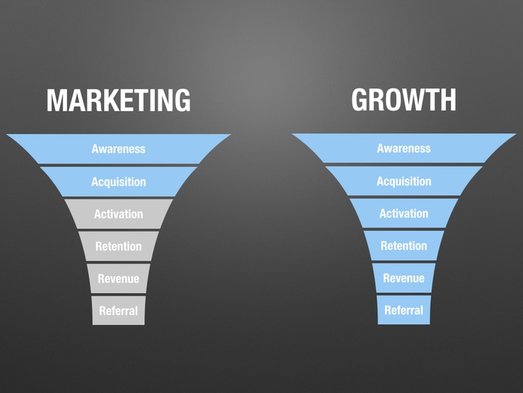

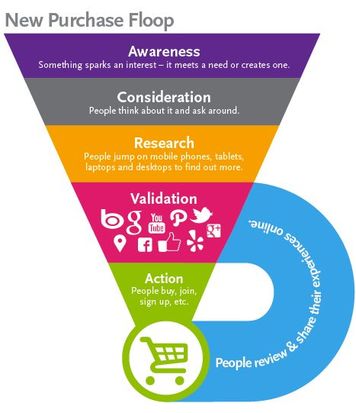



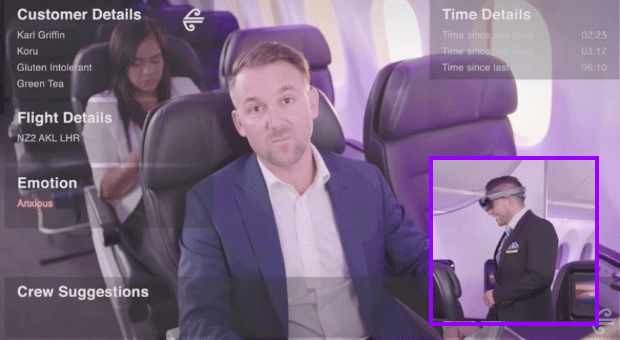


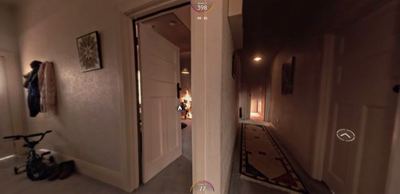









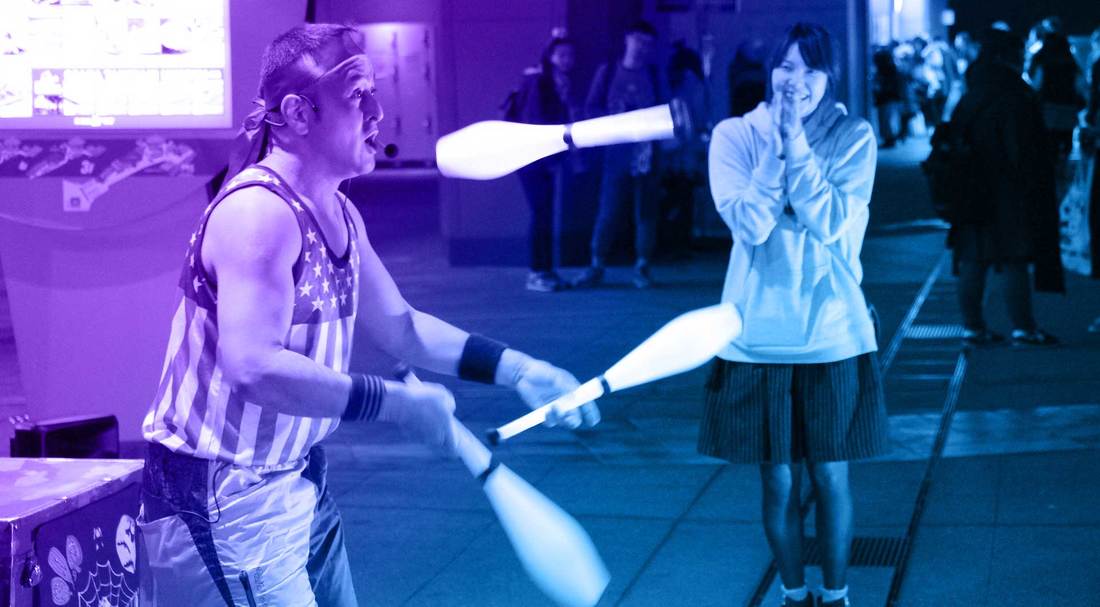

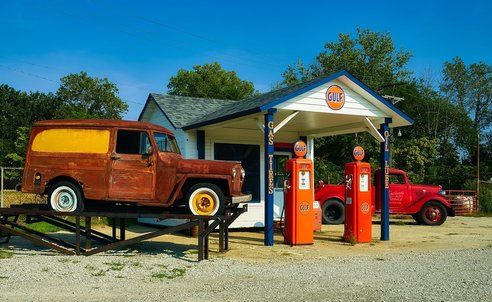

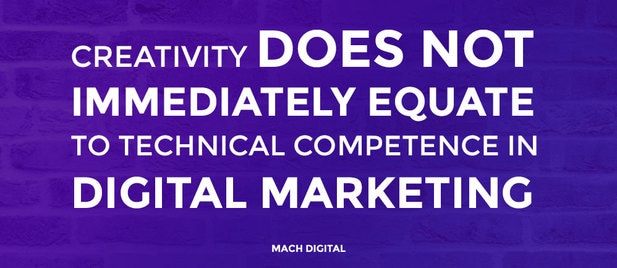
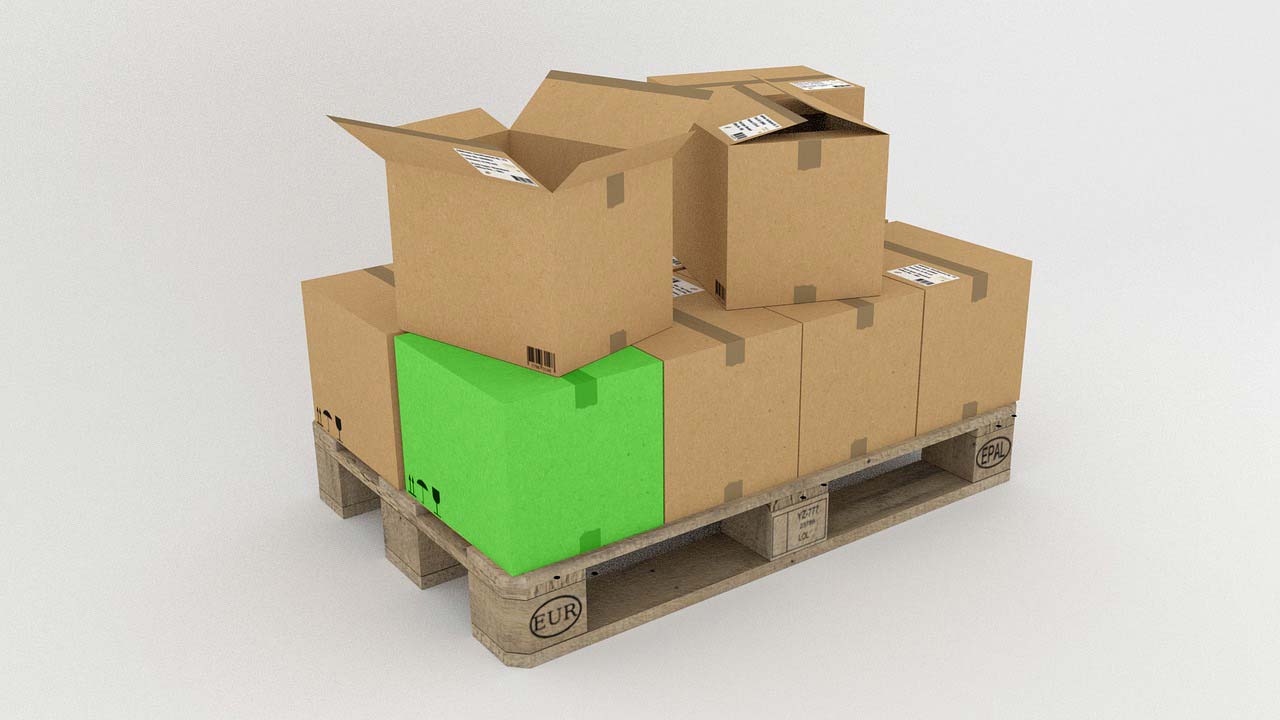




 RSS Feed
RSS Feed
